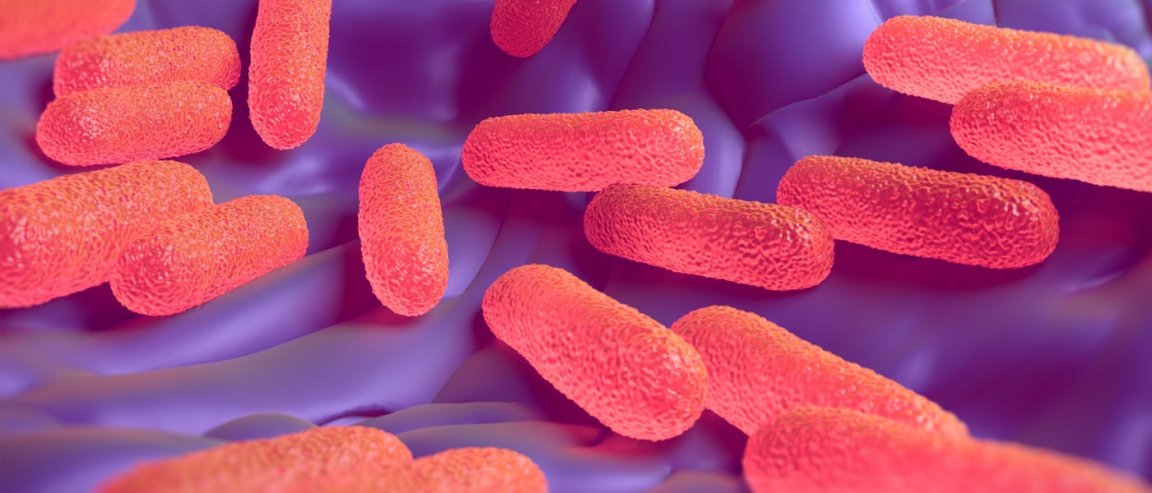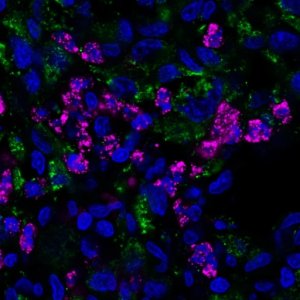
Relax, They’re Friendly
As the culprit behind one million cases of food poisoning and 380 deaths every year, Salmonella is definitely bad news for the stomach. But what if it’s possible to turn Salmonella into one of the good guys? That’s exactly what researchers from Duke University wanted to achieve when they genetically engineered a strain of Salmonella into brain tumor munchers.
In a study published in the journal Molecular Therapy – Oncolytics, the Duke researchers genetically modified the bacterium Salmonella typhimurium not to attack the gastrointestinal tract, but to instead fight one of the most aggressive forms of brain cancer known to humankind. Glioblastoma holds a record median survival time of only 15 months, and that’s even with the best care currently available. Those who survive, just about 10 percent, manage to prolong their lives for only five years once diagnosed.
Furthermore, the blood-brain barrier makes it impossible for drug-based treatment to attack glioblastoma. Surgery doesn’t quite cut it, either. So, an aggressive attacker deserves an equally intense fighter. Hence, the researchers made an unlikely ally out of Salmonella. With a few genetic tweaks to its DNA, they were able to turn Salmonella into a sort of cancer-seeking missile that self-destructs deep inside tumors. Lab tests in rats with extreme cases of glioblastoma showed an astonishing 20 percent survival rate, with the tumors going into remission over a period of 100 days — roughly equal to 10 human years.
“Since glioblastoma is so aggressive and difficult to treat, any change in the median survival rate is a big deal,” said researcher Johnathan Lyon. “And since few survive a glioblastoma diagnosis indefinitely, a 20 percent effective cure rate is phenomenal and very encouraging.”
Self Destruct

According to Nalini Mehta, the study’s lead co-author, the team obtained a strain of Salmonella that was already purine deficient. Purine is a heterocyclic compound that’s abundantly found in tumors. So, once these modified Salmonella were injected into the brain, they dug deep into the tumors and started rapidly multiplying. At the same time, they have also been designed by the team to produce two compounds in low-oxygen environments, such as the inside of tumors. These added compounds, Azurian and p53, cause cells to self destruct, killing both the tumors and the Salmonella bacteria.
As Ravi Bellamkonda, co-author of the study and Vinik Dean of Duke’s Pratt School of Engineering, put it:
[D]esigning bacteria to actively move and seek out these distributed tumors, and express their anti-tumor proteins only in hypoxic, purine rich tumor regions is exciting. And because their natural toxicity has been deactivated, they don’t cause an immunological response. At the doses we used in the experiments, they were naturally cleared once they’d killed the tumors, effectively destroying their own food source.
As with most experimental therapy, it isn’t clear yet when it will move out of the lab and into clinical trials. But this certainly gives hope for combatting one of the world’s deadliest diseases — thanks to genetic engineering. Treatments that use genetic engineering are certainly changing the world of medicine. From the most effective gene editing tool to modifying mosquitoes to fight dengue fever, genetic engineering seems to be leading us steadily into a disease-free future.
Editor’s note: This article has been updated to correct errors. The text previously implied that the research team created the purine deficient Salmonella themselves instead of obtaining it from another research group.